#iberian mercenaries
Explore tagged Tumblr posts
Text
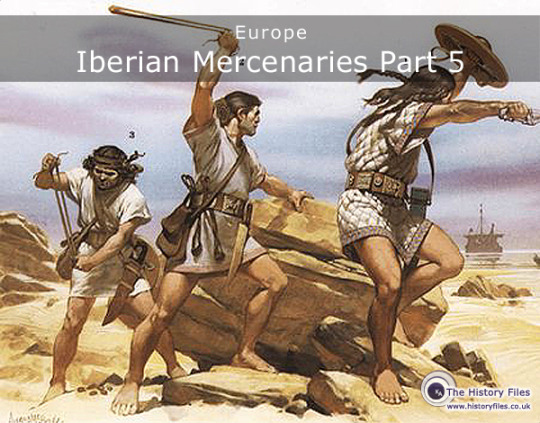
Iberian Mercenaries 5: Women Warriors While Iberian women themselves did not serve as mercenaries, there are nevertheless numerous reports by ancient writers, as there are with Celtic peoples, of women warriors in Iberia.
#history#historyfiles#iberia#iberian mercenaries#mercenaries#women warriors#ancient iberia#ancient europe#ancient spain
4 notes
·
View notes
Text

Genres: Heavy romance, Fall of your entire culture, Ancient history slice of life, Found family
Rating : 16+ for depictions of violence, mature themes and language. (List to be expanded on)
Summary
Life was once tranquil on the isolated coast of your city, surrounded by a loving family and promising prospects for success in your societal position. However, tranquility shattered as flames engulf your city, escape becomes the only viable option, if luck favors you enough to evade the soldiers blocking your path that is.
Yet, amidst the chaos, you realize that the existence of a stray and that of a Roman slave may not be so disparate.
If the gods truly have a plan for you, their track record thus far suggests they're not worthy of your trust either. But when a fate worse than death is upon your door, you really cant get picky can't you?
Features!
Assume the role of a member of an Iberian civilization dwelling along the coast.
Customize your protagonist's background as a warrior or a priest. Both with diferent odds on their favour.
Flee from the Romans (or choose otherwise) and embark on a quest to find a new place to call home.
Decide between preserving your culture from extinction or embracing the dawn of new societal norms, and confront the repercussions of your choices.
Engage in romantic pursuits with one of the available romance options. (Witch will be expanding as the game develops and progresses)
The RO´s Cast
Theodosius (Theo) Aurelius [He/Him]
Theo resembles his father´s features, tall, blond and with eyes coloured by the sea. He also has a cold temperament and a tendency to keep people at arm's length.
But being a powerful Roman family heir might make him a good ally. The truth is that you have no option but to please him or his father who bought you, all in hopes of a change of fortune. Or so you tell yourself, as the cold man shows you a mercy not proper of Romans. Maybe they are not as beastly as you thought after all?
Eon[He/Him]
Eon is a huge man, with signature red hair, heavily tanned skin and a green stare. So is his entire family, a mercenary group from the northern city of Numantine.
With a world of differences in between and a war that has shaken the safety of the entire peninsula, he is as good a bet on survival as it gets. But when the times can't seem rougher, this giant man offers a sweetness that you have rarely known amidst despair, maybe one strong enough to survive hunger?
Demo:
413 notes
·
View notes
Photo

Carthaginian Army
The armies of Carthage permitted the city to forge the most powerful empire in the western Mediterranean from the 6th to 3rd centuries BCE. Although by tradition a seafaring nation with a powerful navy, Carthage, by necessity, had to employ a land army to further their territorial claims and match their enemies. Adopting the weapons and tactics of the Hellenistic kingdoms, Carthage similarly employed mercenary armies from their allies and subject city-states. Military successes came in Africa, Sicily, Spain, and Italy, where armies were led by such celebrated commanders as Hamilcar Barca and Hannibal. Carthage's military dominance was, though, eventually challenged and bested by the rise of Rome and, following defeat in the Second Punic War (218-201 BCE), Carthage's days as a regional powerhouse were over.
The Carthaginian Empire
Carthage was founded in the 9th century BCE by settlers from the Phoenician city of Tyre, but within a century the city would go on to found colonies of its own. An empire was created which covered North Africa, the Iberian Peninsula, Sicily, and other islands of the Mediterranean. The new territory would be a source of vast wealth and manpower. Conversely, this would also bring Carthage into direct competition not only with local tribes but also contemporary powers, notably the Greek potentates and later Rome. In turn, this created a necessity for large military forces, especially land armies.
Continue reading...
162 notes
·
View notes
Text
Countries that are no more: Ancient Carthage (814BC-146BC)
The state discussed in this post is one of the most famous and important in antiquity. Yet, it remains one of the most elusive and mysterious civilizations in world history because its own written records have been virtually erased with all contemporary written records coming from foreign sources that both praised and reviled its existence. However, it was influential for its model of government, its expansion of Mediterranean trade, its influence on models of economic production, naval exploration and for its military leaders whose tactical and strategic prowess influence warfare to the modern day and for its rivalry with the other emerging Mediterranean superpower of antiquity: Rome. A rivalry that is characterized as the quintessential clash of civilizations. This is Carthage.
Name: In its native language, the Phoenician dialect known in Latin as Punic, it was 𐤒𐤓𐤕𐤟𐤇𐤃𐤔𐤕, or annunciated as qrt-ḥdšt or Qart-Hardasht. This translates into English as "New City". In Latin it was known as Carthago or Karthago, the modern English pronunciation of Carthage comes by way of French.
Language: Carthage as a city-state and its empire more broadly held a cosmopolitan mixture of peoples and languages. However, the founders of Carthage and its ruling elite spoke Punic, a dialect of Phoenician associated with the city of Carthage which was founded by Phoenician colonists from the Levant. Punic was Phoenician in origin and became a distinct local dialect of Phoenician speakers in Carthage and other cities. These settlers founded colonies throughout North Africa and the Western Mediterranean. The Phoenician language and its dialects were from the Semitic language family native to the Middle East. It originated as a distinct dialect of the Canaanite peoples from who the Phoenicians and subsequently the Carthaginians descend from. The Canaanites also gave rise to the other Semitic speaking peoples such as the Israelites, Moabites and Ammonites among others. Modern Hebrew is said to be the extant language most similar to ancient Punic. In Carthage's empire there were also local varieties of Berber (Amazigh) languages spoken by the native Berbers who settled in North Africa. There were also local languages in Iberia (Spain and Portugal) from the Iberian and Celtic tribes settled there and the languages of native Sardinian and Balearic peoples as well. Additionally, ancient Greek was spoken by Greek colonists, mercenaries and traders who also settled within Carthage's empire and sphere of influence.
Territory: The city of Carthage is located in the environs of modern Tunis, capital of the modern state of Tunisia in North Africa. It was from this centrally located city founded by Phoenician colonists that their subsequent empire grew. The established contact and control with other Phoenician colonies in the area such as nearby Utica and eventually grew to control all of coastal North Africa from modern Morocco to western Libya. The modern states of Morocco, Algeria, Tunisia and Libya were its core territory, with Tunisia being its heartland. It also included Malta, the western half of Sicily, Sardinia and Corsica's coastal regions, the Balearic Islands of Spain and the southeastern portions of Iberia, particularly the coastal areas with influence into parts of the interior and south of the Ebro River.
Symbols & Mottos: The symbols associated with the state of Carthage are often in reference to their pantheon of gods which were quite extensive but centered mostly around the Phoenician gods but also included Berber, Iberian and Greek influences within their pantheon as well. A military standard associated with Carthage includes a staff with a sun disc and topped with a crescent moon. Also, the sign of Tanit, a Phoenician goddess's whose symbol was found on Carthaginian ruins along with Phoenician ruins found back in the Phoenician colonists' homeland in the Levant (Lebanon, Israel and Syria). The sign of Tanit appears in many varieties but is usually found as a schematic like sketch of a person with a triangular base with a disc on top with horizontal lines then pointing upwards like raised arms.
Religion: With Phoenician settlers being the originators of Carthage its ruling elite, the primary state religion was their variety of the ancient Phoenician religion which was polytheistic and included many notable gods and goddesses from Tanit to Baal Hammon, Melqart and Astarte among others. Many of these gods found companions with the Greeks and indeed due to the interfacing with Greeks both through trade and war, some Greek gods would also be incorporated into the Carthaginian pantheon, though it remained distinctly Punic at its core. There also appears to be Berber (Libyan and Numidian) influences along with Sardinian and Iberian interfacing that both saw the spread of worship of the Punic/Phoenician deities with local influences likewise being adopted by the Carthaginians. Even some ancient Egyptian gods appear to be included in Carthaginian worship. This syncretism and tolerance reflect the cosmopolitan outlook and composition the Carthaginians had within their realm.
There were priests who maintained the temples and sanctuaries devoted to particular deities. Likewise, Carthaginians practiced everything from ritual banquets to funerary rites such as those in the Levant like disposing of the remains of the dead, feasts for the dead, ancestor worship and goods in the tombs of the dead, indicating belief in life after death. Cemeteries were often built outside the walls of Punic settlements and included stelae with inscriptions serving as grave markers. Carthaginians practiced both burial and cremation.
There does appear to be cases of animal sacrifice to appease the gods in Carthaginian society as well. This tended to follow very specific regulations and rules.
The most controversial topic of the Punic religion however appears to be the practice of child sacrifice. The sources for this we must bear in mind come from Greco-Roman writers that weren't known to actually witness the practice and from civilizations that had biases toward Carthage more broadly. Yet both Greek and Roman sources cite the Carthaginians as practicing child sacrifice in their religion. These sources sometimes do contradict one another in their specifics. Modern historians debate the extent of this practice and what are the contents found at the sites known as Tophet in urns with ashes that may come from human infants. The Greco-Roman sources state children were specifically killed for ritual purposes and killed in various manners and burned as offerings. Based on archaeological findings some historians take the position that the practice may have occurred but may have been relegated to the ritual cremation of infants who died of natural causes. Others uphold the Greco-Roman sources and other deny the practice at all, chalking it up as pure invention of biased sources from Greece and Rome. Because Carthage was destroyed by Rome in 146 BC and virtually all extant written sources on Carthage come from Roman and Greek sources, there doesn't appear to be any definitive answer to this practice's purported extent or even its existence. Modern archaeology can lend more nuance to the topic but a clear answer like much of what we know about Carthage and its society remains a mystery.
Currency: The basic coinage of Carthage was called the shekel which derived from its Phoenician antecedents. There were gold, silver and bronze coins found throughout Carthage's empire. Mints were found not only in North Africa but Sicily and Iberia. Coins depicted everything from date palm trees to famous soldiers and politicians both Carthaginian in origin like the Barcid family of Hannibal Barca and even Greek rulers such as Alexander the Great.
Population: At its peak the empire had probably 3.7-4.3 million people. The city of Carthage proper at its peak was anywhere 250,000-500,000 people.
Government: The basis of our understanding of Carthage's governance is limited and largely based on ancient Greek and Roman sources. Some of which write of it in disparaging terms and others praise it for its complexity and nuance.
The basic understand is that during the first few centuries of Carthage's existence it was probably a monarchy. However, the extent to which the kings ruled over Carthage is debated. The Phoenician city states from which Carthage descended, namely Tyre had nominal monarchs but who deferred to a council of advisors who helped craft policy and administer the law. It seems reasonable that Carthage followed this political model in its earliest stages with nominal monarchs who likewise consulted a council of advisors made up Carthaginian nobility to craft and administer policy. The degree to which kings of Carthage held power probably fluctuated.
Following the First Sicilian War against the Greek colonists on Sicily in 480 BC, the nature of Carthage's government changed gradually with a weakening of the monarchy. By the 300s BC Carthage was at its peak and best characterized as an oligarchic republic. It was noted to have numerous checks and balances on the branches of government, a vast and complex administrative state, high levels of public accountability and participation in civic duty. Aristotle the famed Greek philosopher wrote on Carthage in his treatise "Politics" as the only non-Greek polity to be represented in the work.
Carthage as a republic became ruled nominally by two simultaneously elected non-hereditary magistrates called sufetes or shophets. This position's title translates as "judges" and they are said to handle a mix of judicial and executive powers. How they were elected and who was eligible for this head of state position is not known. What is known is they were always from the oligarchic ruling class of Carthage and that they held annual terms. The Roman writer Livy states this was comparable to the Roman republican practice of electing two consuls for annual terms. They are said to have ruled jointly and likewise handled matters of state through the convening and presiding over the supreme consultative council known as Adirim (similar to the Roman Senate), submitting legislation to the popular assembly and adjudicating trials. The sufetes interestingly did not hold any military power as this was separated and reserved for military commanders with the generals reporting to the Carthaginian assembly in the Adirim.
The Adirim held about 30 members on the council and like senators in Rome were elected from the wealthy elite merchant families of Carthage. They administered the treasury, conducted foreign affairs and providing some control over military affairs. It is said matters of state required unanimous decision making to go into effect.
Carthage also had judicial assembly called the One-Hundred and Four. These judges provided oversight of the military and other politicians and bureaucrats within Carthage. As an example of Carthage's political checks and balances, the One-Hundred and Four had the power administer monetary fines or even the death penalty, sometimes by crucifixion on military or government officials found to have engaged in unbecoming behavior that went against the interest of the public. It also formed small committees to provide oversight on political matters.
Separate from these bodies also came numerous junior bureaucratic positions to held administer everything from tax collection, public works and the state treasury.
Carthage also contained at local levels trade unions, a popular assembly and town meetings. In matters where the sufetes and Adirim could not decide law in a unanimous manner a popular assembly was consulted to make a final determination. Whether this was a formal institution or ad hoc solution has never been determined.
Aristotle singled out the Carthaginian government as more meritocratic than its contemporary Greek counterparts. He also praised its complex balance of monarchical, aristocratic and democratic elements. Some other Greek writers went so far as to say it was the best form of government in existence at that time only equaled in the Greek world by Sparta. Meanwhile, Aristotle himself stated that Carthage had some form of constitution and found it superior to Sparta's.
The Greek historian Polybius writing for a Greco-Roman audience in his commentary on the Punic Wars between Rome and Carthage stated that Carthage had more democratic elements than Rome did and that the common people were on average given more say than Romans at the time. However, Polybius saw this as a detriment to Carthage during the Punic Wars, in his estimate too much bickering and infighting to gain a unanimous decision led to paralysis and indecision. Whereas he favored the Roman Senate's rules which were less democratic overall and therefore more decisive in determining important decisions at crucial moments such as in war.
Carthage's republican government appears to have been replicated in the colonies and territories throughout its empire with sufetes found at local colonial levels. There appears to be cooperation between Punic colonial officials and the local population under Carthaginian rule.
Carthage was primarily mercantile in its outlook. The control of trade commodities and goods throughout the Mediterranean was the basis for its economic development and always of primary concern. Hence the merchant class-oligarchy's vested interest in maintaining power.
Military: Carthage was a classic example of a maritime power. Its navy was its most important military branch in many ways. The navy was used to ensure control over the network of trade routes between the various parts of the Western and Central Mediterranean. It would win naval victories over its Greek and Roman rivals though it would ultimately face defeat by the Romans.
The navy was large in size for antiquity and benefitted from the Phoenician advent of serial production, the ancient equivalent of assembly line production which produced ships of good quality but in an efficient manner. They could maintain hundreds of ships at one time, even after their power dimmed with the rise of Rome.
The ethnic composition of the navy's sailors, oarsman, navigators and marine force was almost exclusively Phoenician. Given the Phoenicians long association with seafaring trade and navigation, the Carthaginians merely upheld this tradition including in warfare.
The army of Carthage, its land based military branch was also crucial in achieving its geopolitical goals. From the subjugation of rebellious tribes in North Africa and Iberia to battling the Greeks and Romans in foreign wars. In conjunction with the navy the ultimate goal was maintaining Carthage's control of trade routes and upholding its sphere of influence to maintain favorable conditions for said trade.
Due to the limited population of Phoenician colonists spread throughout the Carthaginian empire and given their traditional naval prowess, much of the army was not of ethnic Phoenician/Punic background. Instead, they relied on a multinational mix of auxiliaries and mercenaries to fill the armies ranks. There might be Phoenician officers and generals such as the famed Hannibal Barca and his relatives including his father Hamilcar and brothers Mago and Hasdrubal, but many other officers could be Greeks among others. The rank and file including Greek mercenaries fighting in the hoplite style, many Greek colonists from Sicily and Southern Italy, Berber infantry and cavalry, particular the light cavalry of Numidia famed for its fast-moving skirmishers armed with javelins and the Libyan infantry. Iberian infantry and cavalry of mixed Celtic and Iberian backgrounds. The famed light skirmisher infantry from the Balearic Islands who slung stones at their enemies were likewise part of the army. Also included in the army were Gallic (Celtic) infantry and cavalry from France and Italy, Sardinians (Nuragic) and Italic peoples such as Samnites, Lucanians, Etruscans and even some Latin peoples including Roman defectors could be found among Carthage's land army. The Phoenician rank and file in the army were usually colonists from other Punic settlements and not Carthage proper. The exception being the famed 3,000 strong Sacred Band of Carthage which were derived from the strongest and healthiest of Carthage's wealthiest families to fight as an elite special unit of the army. Armed and trained int the Greek hoplite style and phalanx formation.
The army also utilized African Forest elephants as a mobile force similar to a wrecking ball. These elephants provided a fearsome complement to the army and was famously used by Hannibal Barca in his crossing of the Alps to invade Roman Italy during the Second Punic War.
The major conflicts Carthage fought in its history were its colonial wars in North Africa against Berber tribes and kingdoms, Iberia and in Sicily first against the Greeks and later against its archrival Rome. The three Punic Wars fought between Carthage and Rome have been characterized by some historians as the ultimate and perhaps most important clash of civilizations in the ancient world and perhaps of all time. Ultimately, they would all end in Rome's favor and eventual destruction and razing of Carthage by Rome, ending Rome's biggest rival and leading to Roman supremacy over the Mediterranean basin for the next several centuries.
Economy: Economic concerns were of chief importance to the Carthaginians. Their empire was essentially a commercial one or rather an expansive and complex trade network with the state trying to aggressively uphold and expand its scope. Its origins lie with the Carthage's Phoenician roots. The Phoenicians based in the Levantine coast (mainly modern Lebanon, Israel and Syria) weren't one united people but rather a series of city states, with the most powerful being based on the coast. These included the cities of Byblos, Sidon and Tyre among the leading polities and all with an outward maritime trade orientation. The Phoenicians produced many goods and economic models that would be both enriching and influential on trade throughout the ancient world. This included purple dye for fabric, uncolored glass, wine production and Lebanese cedar for timber production and the serial production economic model.
Carthage was founded in modern Tunisia by Phoenician colonists from the city of Tyre (Lebanon) in the 9th century BC. They were not the first Phoenician colony in North Africa but they eventually rose to become the most aggressive and successful. In part this was due to its secure and strategic location. It soon became the leading trade center on the Western and Central Mediterranean. They controlled trade routes at sea and rose to prominence and domination among all the other Phoenician colonies setup in North Africa, Sicily, Malta, Sardinia and Iberia.
Mining for metals silver, lead, copper and tin were of crucial importance for the wealth of Carthage, in particular this motivated their expansion into Iberia. Additionally, the temperate and fertile climate of the Western Mediterranean lead to much wine production. They also traded in amber, timber, grains an food preservatives.
While mostly a maritime trade power, Carthage also had overland caravans to secure goods from the African interior and even the Middle East. Continual exploration for new and expanding trade routes and goods was also important for Carthage. Famed Carthaginian explorers of Punic origin included Himilco the Explorer who lived in the 6th and 5th centuries BC. He is said to have been the first Mediterranean sailor to have explored the Atlantic routes to Northwest Europe, visiting Portugal, France and the British Isles. Britain in particular was important to the ancient tin trade which was necessary in bronze production. Britain was known in the ancient world to the Carthaginians and Greeks as the Tin Isles.
Hanno the Navigator was said to have explore trade routes to western Africa. Reaching as far as modern Senegal and Cameroon,
Lifespan: Carthage was said to have been founded by Phoenician colonists from the city of Tyre circa the 9th century BC. A foundation legend raised from its founding. Namely the legend of Princess Dido from Tyre leading her fellow Phoenicians not as colonists looking for commercial benefits but political refuge from her dictator brother. According to legend Dido and her retinue arrived at Tunisia and tricked the local Berber king into grating them a sizable tract of land from which the core of what became the city of Carthage was founded.
The city was given the name by its settlers of Qart-Hadasht, which in the Phoenician language meant "New City". The year 814 BC is often cited as the approximate date of its founding.
Quickly Carthage made an association with and eventual domination of fellow Phoenician colonies in the area including Utica. Its favorable climate, arable land and strategic location were all crucial to Carthage's rapid growth and dominance of over other Phoenician colonies. It would expand to conquer lands ranging from the whole of North Africa from Morocco to Libya, the islands of Malta, Sicily, Sardinia, Corsica and the Balearics and parts of the Iberian Peninsula over the coming centuries found themselves either under direct Carthaginian rule or favorable treaties incorporating the lands into its sphere of influence hence creating a trade network and empire, a classic example of a thalassocracy.
Initially, the Carthaginians paid a tribute and maintained contact to its mother city of Tyre back in Lebanon. However, this became an irregular occurrence due to Carthage's increasing independence due to its great distance from the Levant and the assertive character to its own local citizenry. Carthage began to see a mix of Phoenicians and local Berbers creating a unique Punic culture that synthesized the two cultures and ethnicities over time with the Phoenician dialect and culture remaining dominant but adaptable for its ability to incorporate other cultures. This was true as its sphere of influences expanded in the Mediterranean.
Carthage's independence was not only due to its relative distance from Tyre but due to the events back in Phoenicia. Various sieges from Babylonia and eventually later the Persian Achaemenid Empire conquered Phoenicia including Tyre circa 530-522BC. The subjugation of these lands reduced contact between the Carthaginian settlers and their Tyrian origins which had until that date sent a steady flow of colonists. While some flow of other Phoenicians would continue, the population would be buttressed by local native populaces and other Phoenician colonies rather than direct Tyrian migration.
The city of Carthage itself expanded over the centuries and created several distinct districts and architecture. At its peak in the 4th century BC, it contained a population between a quarter and half a million people. making it one of the world's largest and most prosperous cities at the time. The city had a mix of wealthy villas, apartment blocks six stories high, had warehouse and commercial districts, goods markets, a Greek style agora or public space, elaborate gardens. temples to various gods, various government buildings and a unique double harbor known as the cothon, which became the physical feature along with the Byrsa hill most associated with Carthage. The cothon featured an outer commercial harbor and military inner harbor with ship warehouses on a man-made island from which ship repairs, construction and maintenance could be addressed through its serial production. The Byrsa hill was the central district of Carthage which contained important temples, it had stair way avenues which were relatively wide for traffic, whereas most of the city's routes had narrow winding paths to navigate. The city was said to have triple walls for defenses, a shorter outer wall made of either stone or wood, followed by a ditch, a second taller stone wall 5 meters thick, a second ditch and a third stone wall 10 meters thick and with armed towers able to hold a force of over 20,000 troops.
In 509 BC it signed its first treaty with Rome, its eventual rival which at the time was the inferior power still clamoring for power on the Italian peninsula. The treaty was meant to demarcate their respective spheres of influence. From 580-265 BC, the Carthaginians found themselves in a series of wars with the Greek colonies of Sicily and Southern Italy. Namely, the city state of Syracuse which was the principal Greek settlement on Sicily.
These wars were back and forth in nature, marked by victory and defeat on land and sea for both sides. Eventually Carthage would retain control over the western half of Sicily until its loss of control in the Punic Wars with Rome. The Sicilian Wars also saw the gradual weakening of the kings of Carthage and its transition to an oligarchic republic (see government section).
The Punic Wars (264-146 BC) began almost by accident with neither Rome nor Carthage initially planning a direct confrontation with the other. The city of Messana (Messina) in Sicily found itself in the 260s BC under the control of a group of Italian mercenaries who had previously served the tyrant (king) of Syracuse who had died in 280 BC. These independent mercenaries were a threat to both Carthage and Syracuse's interests on Sicily. These mercenaries named the Mamertimes (Sons of Mars) divided into two factions, over the issue of the new Syracuse tyrant Hiero II's planned retaking of Messana. One faction advocating a Carthaginian intervention to take charge of the city's security and the other advocating for Roman intervention from the Italian peninsula. Carthage arrived first with a land garrison and naval fleet in the harbor. The Roman Senate was reluctant to assist the mercenaries but recognized the potential threat a permanent presence of Carthaginians in Messana and its location on the narrow Straits of Messina between Sicily and Italian mainland could pose on Roman trade and security. It advocated sending an expeditionary force to retake Messana to eject the Carthaginians. The attack triggered the first Punic War between the two powers. It turned into a quarter century struggle that was marked by intense fighting mostly on Sicily.
The First Punic War was ultimately a Roman victory that ended Carthage's presence on Sicily. It also saw Roman advances in naval technology such as the corvus to help board Carthaginian ships. Hitherto the Romans had little naval strength relative to Carthage but its innovations in naval warfare proved crucial in undermining Carthage's longstanding naval superiority. Meanwhile on land, despite the back-and-forth nature of the battles, the Roman army's tactical flexibility often proved superior to Carthage which after 23 exhausting years agreed to peace. It gave up control of Sicily to Rome (aside from Syracuse) and paid a tribute over the course of 10 years.
Rome also after the war used Carthage's distraction against a Libyan rebellion in the Truceless War to take control of Sardinia and Corsica in 238 BC.
To compensate for the loss of territory on Sicily, Sardinia and Corsica, the Carthaginians under Hamilcar Barca tried to expand its territory in Iberia against Celtic and Iberian tribes especially to profit from increased mining production. They also gained new manpower and agricultural production to boost their economy and military again. They also had a standing agreement with Rome to not intrude north or south of the Ebro River respectively. However, an Iberian city of Saguntum south of the Ebro had an agreement with the Romans. This upset the balance of power established with Carthage in Iberia. Hamilcar Barca's son Hannibal now in charge of the Carthaginian army in Iberia an avowed enemy of Rome, besieged Saguntum which he took in 8 months. This is turn led to Rome's declaration of war, starting the Second Punic War which lasted for the next 17 years.
In one of the most famous military campaigns of all time, Hannibal and his army complemented by Carthaginians, Numidians, Celts, Iberians crossed the Alps and invaded Italy, taking the war to Rome's home territory. Hannibal showing his tactical prowess would defeat Roman armies repeatedly on their own territory most notably at the Battle of Cannae in 216 BC. Many Italian cities that had been incorporated into Roman rule over the previous centuries rose up to join Hannibal against Rome. However, Hannibal never had sufficient strength to directly besiege Rome. Rome was constantly tested by Hannibal's victories over the next 13 years in Italy, but they refused to surrender and adopted an attritional strategy, and this wore down Hannibal by gradually retaking Italian cities allied to him if not able to defeat him directly. Likewise, they repelled Carthage's attempts to reinforce him in Italy. They also faced mixed success gradually conquering Iberia from the Carthaginians. Finally, an invasion of Tunisia forced Carthage to recall Hannibal back to North Africa to defend the capital from a Roman assault. He met the Romans in the Battle of Zama in 202 BC which resulted in a Roman victory over Hannibal himself at once.
Hannibal advocated for the government of Carthage to negotiate a treaty with Rome which it did. Its terms were harsh. A stripping of all overseas possessions of Carthage in Iberia and elsewhere including some African territories. A large punitive indemnity to paid to Rome over 50 years. A reduction of Carthage's navy ten warships, a ban on Carthage's use of war elephants. A prohibition on Carthage being able to fight war outside of Africa and any war it wages in Africa must require Rome's express permission.
Hannibal eventually became a sufete in Carthage and worked to reform the government of Carthage and stamp out corruption so as to ensure its ability to pay Rome its due from the treaty and rebuild its economy. Indeed, Hannibal was somewhat successful in his regards and Carthage's economy was somewhat rebounding but facing pressure from Rome and enemies in the local government, he went into voluntary exile in service to Greek states opposed to Roman expansion in the east. He died in exile under murky circumstances variously described as a suicide or murder.
The Third Punic War 149-146BC began will Carthage went to war in Africa with Berbers who were raiding its territory and without Rome's permission, this was used a pretext to attack Carthage itself by Rome for violating its treaty from the previous war. The third and final Punic War was characterized by a three-year siege of Carthage. Ultimately, the Romans after much pressure on both sides broke through its triple walls and assaulted Carthage in street-by-street fighting. The city was razed to the ground, much of its population killed by angered Roman troops. 50,000 Carthaginians were enslaved and sent elsewhere through the Roman Republic's empire. Carthage was no more as an independent political entity after 146 BC. A century later, Rome rebuilt the city on its ruins as part of its empire and it remained an important city within the Roman Empire until the fall of the Western half of the empire where it fell to the Germanic barbarians the Vandals who had their capital in Carthage, it was reclaimed by the Easter Roman Empire (Byzantine Empire) by the forces of Belisarius in service to Justinian I. Carthage would face a final destruction as a Roman city when the Arabs of the Umayyad Caliphate destroyed the city in the year 698 AD. It never rose as a city again, instead its ruins remain part of the suburbs or the modern city of Tunis, capital of Tunisia.
Carthage despite its being steeped in legend and mystery remains worthy of study as one of the undeniably great civilizations of antiquity. A fact recognized by its contemporaries whether they wrote of it a complimentary fashion or with contempt, its power, wealth and influence was immense enough to engender scholarly study and reflection at the time. It is for these contemporary recognitions whether positive or negative and absence of surviving self-records that many continue its study into the modern age. Particularly its opposition to Rome and the perception by Rome that it was a worthy rival that needed complete annihilation, especially given Carthage's ability to stand up to Rome in a way no other power really could at its peak.
The more Carthage is analyzed both by its contemporary foreign commentators with the surviving archaeological and fragmentary historical record, the more nuance can be shed on the complexity of the civilization and influence it had on world history. Its opposition to Rome might be its most noted aspect but it shouldn't overshadow how else Carthage influenced the world. From its complex style of government and network of commercial imperialism that presaged future thalassocracies such as the Italian republics of the Middle Ages like Venice and Genoa and how it produced economic production models which influenced Rome and Greece and subsequently other areas of the world, they carried that influence on to. Likewise, another legacy of Carthage was how it helped build an ancient iteration of a globalized economy, shrinking the gap between the long distances of the ancient Mediterranean world by linking disparate geographies and peoples under a common commercial interest. In this commercial pursuit it also revealed itself to have both a distinct dominant culture but one that was not intolerant or unable to accommodate and absorb other cultural influences. In many ways ancient Carthage by way of its influence on Greece and Rome and their own influences give us glimpses into how its existence served as a precursor to the modern world we inhabit.


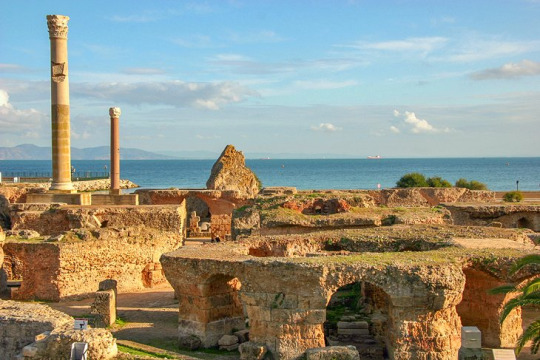
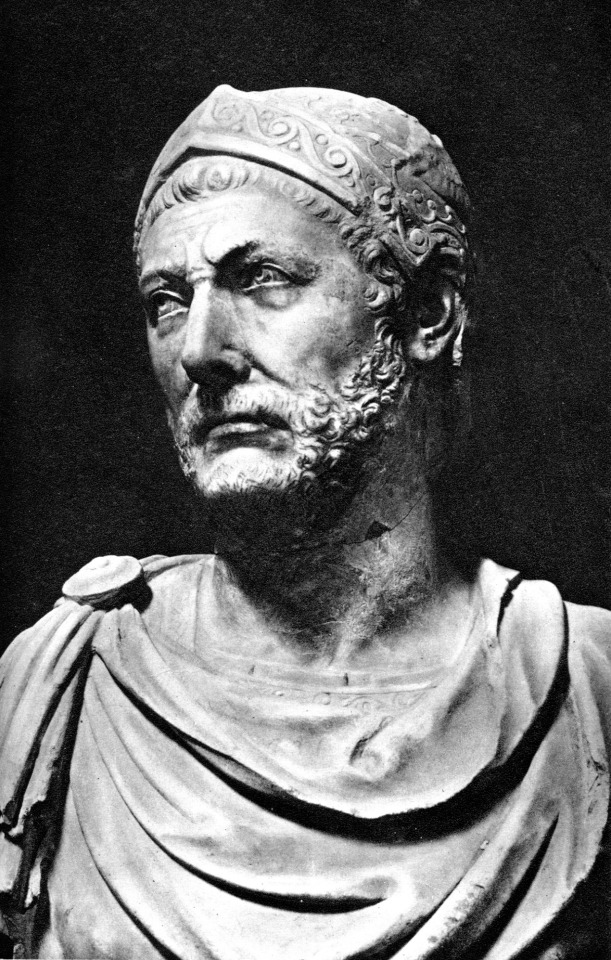
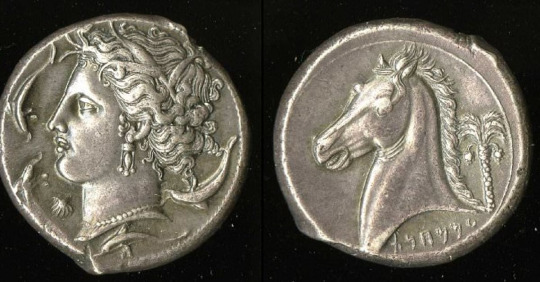





#history#military history#ancient history#ancient world#ancient ruins#ancient carthage#carthage#ancient rome#ancient greece#tunisia#iberia#hannibal#scipio africanus#ancient phoenicia#phoenician#punic wars#sardinia#sicily#corsica#malta#balearic
9 notes
·
View notes
Note
Asteroid Hannibal (2152)
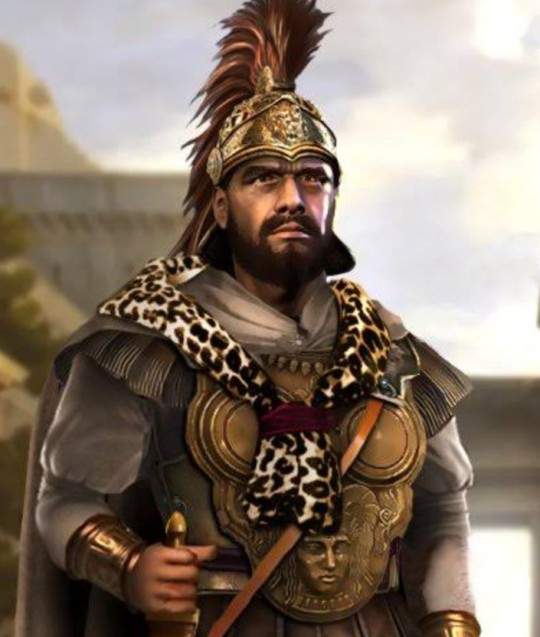
hannibal, commander in chief of the carthaginians (asteroid 2152)
paid reading options: astrology menu & cartomancy menu
enjoy my work? help me continue creating by tipping on ko-fi or paypal. your support keeps the magic alive!
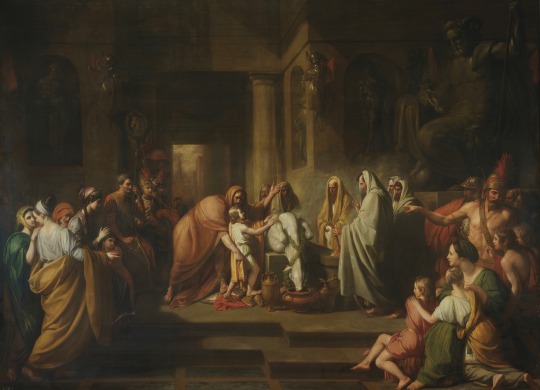
The Carthaginian (present day Tunisia of North Africa) general, Hannibal, was considered one of the greatest commanders of antiquity. Both Greek and Roman historians carefully documented his life. Hannibal allegedly swore at an early age to show animosity towards the Roman Republic due to his father being forced to surrender part of Sicily to the Romans. After this the father and son duo found themselves conquering the Iberian Peninsula. By his early adulthood Hannibal was the commander in chief of the army - with this power he started what is known as the Second Punic War against the Romans. During his many years before beginning this War he assembled mercenaries from Spain, North Africa, and Gaul - his naval fleet became a great armada. His invasion from the Alps took the Romans by surprise and led to an incredible defeat of Roman troops - this is the combat often referred to as the Battle of Cannae. Hannibal fought for many years and up until the very end too - Hannibal became surrounded by Romans and was forced to surrender, but Hannibal poisoned himself instead of submitting to them, his terminal enemies. IN MY OPINION Hannibal in your chart can represent a) where you take charge, b) where you know your enemies best, c) where you are an incredible leader, and/or d) where you remain a mystery and unpredictable to your opponent.
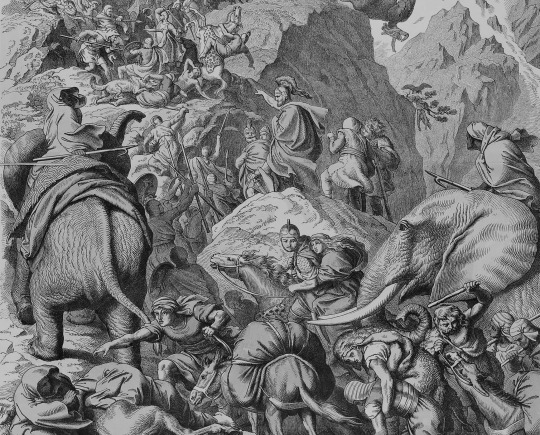
i encourage you to look into the aspects of hannibal along with the sign, degree, and house placement. for the more advanced astrologers, take a look at the persona chart of hannibal AND/OR add the other characters involved to see how they support or impede hannibal!
have ideas for new content? please use my “suggest a post topic” button!
return to nox's guide to metaphysics
#astrology#astro community#asteroid astrology#astro chart#astro placements#asteroid#natal chart#persona chart#greek mythology#roman mythology#hannibal#asteroid2152
42 notes
·
View notes
Text
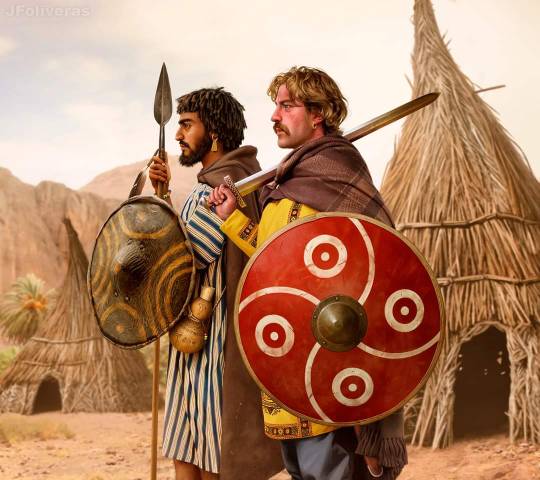
VANDAL nobleman and MAURI mercenary in North Africa, somewhere south of the Atlas (5th century AD). The aesthetic of the Vandal is based on 5th or 6th century mosaics from Carthage (Tunisia), which was the capital of the Vandals at the time. He wears a Late Roman “Coptic” tunic, and a barbarian tartan-like cloak. Contrary to the Germanic tradition of sporting a full beard and long hair, the Roman and Asiatic influences are visible in his short hair and moustache. He carries a sword decorated with garnet cloisonné, which is based on a find from a warrior’s grave from Beja (Portugal). This sword has Asiatic influence, as a result of the Vandal’s coexistence with the nomadic Alans in Hispania. Similar swords were also used by the Huns. The clothing of the Mauri (an ancient Amazigh people of modern-day northern Morocco and Algeria, also known today as the Moors) is based on a 4th-6th century stele from Djorf Torba (Algeria), and the hairstyle is based on Roman representations of Mauretanians and Numidians. The shield, made of elephant hide, is painted with motifs based on representations of shields in Prehistoric rock art of the Moroccan Atlas. The huts in the background are based on a Roman mosaic from El Alia (Tunisia).
THE VANDALS were a Germanic tribe of Scandinavian origin that migrated from the Baltic region to Central Europe and then Roman Gaul, finally conquering part of the Iberian Peninsula alongside the Iranic-speaking Alans (who had migrated from the Caucasus). The Vandals and the Alans ruled Hispania until they were pushed to Africa by another Germanic tribe: the Visigoths. The Vandals and the Alans managed to conquer Roman Africa, and from there, they launched a fleet of ships to Italy and sacked Rome in 455 AD. The “Eternal City” had already been sacked by the Visigoths in 410 AD. The Western Roman Empire finally collapsed in 476 AD. The Vandal kingdom would last until 534 AD, when it was destroyed by the Eastern Roman general Belisarius as part of emperor Justinian’s restoration of the Roman West. The Eastern Romans, or Byzantines, retained control of the Maghreb until the Islamic conquest of the 7th century.
HQ + close-ups: https://www.artstation.com/artwork/rJEKNE
13 notes
·
View notes
Text
Goddess girlies i am begging you (as a fellow goddess girlie) to read some actual history. Im sorry but theres no way pre christian europe was some kind of leftist haven. I hate to tell you this but the ancient greeks would have loved capitalism. Greek mercenaries were a major part of the ancient Mediterranean economy. All of these people participated in slavery. Also sorry again but the pagan beliefs of say a roman vs a proto odinic cult danish person vs a iberian vs a slav had. Very little if all to do with each other outside of a tenuous indo european arguement. And "european" was not really a way people saw themselves anyway.
And again i have to stress most groups in the ancient world were slave owning warrior societies!!!!!!!!
I understand the urge to create some alternate timeline where our current world would be better and i understand the urge to escape christian thought. But youve gotta have some critical thinking.
2 notes
·
View notes
Text
Remembering how some spanish right wingers believe that the "El Cid Campeador" Poem was a true fact passed it irl in the Iberian Peninsula,is a poem what idolize a mercenarie saying he was who get out of Spain the Islamic people,and fought a lion
Reminiscense of Heracles/Hercules maybe
But obviously that never happened,you fought a lion and you're dead,also the islamic people while the invasion on Spain,let christianism alive and let them marriage with islamic people,and gave us some greek philosophers traducted
#history of spain#history#spanish poetry#right wingers has no idea#how the fuck you can think you will survive against a lion#i know this website is mostly english
0 notes
Text
The glory of Rome awaits you in this addictive Tower Defense and war strategy game. Play Grow Empire: Rome and turn your small town into the largest and most powerful empire in history. Strategically upgrade your walls, towers and warriors, and protect your city from attacking elephants, siege weapons and waves of enemy troops by covering the sky with arrows and fire. Confront fearsome armies of barbarian, Gallic, Iberian and Carthaginian warriors and expand your empire throughout Europe and Africa. Defend your colonies and fill your coffers with gold with their tributes. Become the leader that Rome claims. Conquer enemy cities and obtain chests with gems, gold, potions and cards! Create an invincible army of heroes, legionaries, mercenaries and siege weapons that will make you the most feared Caesar in history. ⚔ Features: ⚔ ★ +1500 waves that will test your defense / courage. ★ +120 cities to conquer. ★ Test your archer skills with Tavern mission mode. ★ +1000 building upgrades. ★ +35 different Roman troops to boost your army. ★ 4 enemy factions that will test your thirst for glory. ★ Siege weapons and war elephants! ★ 7 heroes with unique abilities that will help you conquer all. ★ +18 Abilities of 20 different levels to improve your attack and defense strategy. ★ 18 offensive and defensive cards to boost your game strategy. What are you waiting for? Download the game and let the conquest begin! ⚔ Live the full Grow Empire: Rome experience, Follow us on our social networks. Instagram @growempirerome/ Facebook @growempirerome/ YouTube https://www.youtube.com/c/GrowEmpireRome Discord: https://discord.io/growempirerome ⚔ Hey conqueror, if you are a video creator or streamer, we would love to see your content on YouTube. We support and promote channel creators, so if you want us to showcase your videos or want to know more about our game, feel free to email us at [email protected] 👉 Got a problem? Contact us at [email protected] 👉 Terms of use and privacy: https://gstationstudio.com/privacypolicy/
0 notes
Text

King Fernando befriends his spymaster, Diego the King of Thieves at a dance in Leon. This is so he can make his 2nd Best Friend and Synergize the friendship to get that extra +3 points to his Intrigue skills.

King Fernando declares the Iberian Reclamation war for the Taifa of Balansiyyah against Amir al-Umara Yahya IV ibn Abu-Bakr of the Almoravid Grand Emirate. Their military strength is rated similar to ours, and this is my first time declaring such a major war where the outcome is uncertain! But what must be done, must be done. We cannot allow some outside upstart (Almoravid Kingdom) from taking too much land in Iberia and disturbing the Iberian struggle.


King Fernando calls in his ally, friend and brother-in-law King Zvonimir Kresimiric of Croatia to war to boost our number of soldiers by 5000 men. In addition, King Fernando also hires mercenaries in the form of the Breton Band of Leon for their 378 pikemen. This mercenary company is not from our Leon, but the Leon county of Brittany.


We won the Battle of Burjanna (Christian name: Castello) with our Marshal Count Guterre Diegez of Coruna leading with a 29 commander advantage despite having just 18 prowess. We also managed to kill 3493 Almoravid men versus sustaining just 2229 casualties on our side, besides wounding Yahya IV, Almoravid's King and chief commander.

King Fernando's wife Queen Joana offers guidance in his studies and someone to exchange ideas with. King Fernando gladly takes up the offer and gains Studying Diplomacy for 10 years.


We discover to our shock and horror that King Fernando's half-brother Infante Rodrigo has gained quite a bit of girth thanks to his new trait Comfort Eater, causing him to overindulge in Marzipan. Whether this is a reaction to his Cancer diagnosis is unknown.

To fund the coffers of King Fernando's ongoing war campaign, King Fernando had to sell the Christine's Crown that King Alfonso had made in order to keep the current default crown on his head and not be nicknamed "the Crownless".

Finally, Infante Rodrigo Alfonsez of Leon died of Cancer at the early age of 49 and left behind a Castilian Mace to King Fernando.


Duke Ramon Berenguer of Barcelona got up to some hijinks involving the horses and livestock in the stables being ridden around the feast halls. King Fernando gains the modifier Lively Feast which increases Light and Heavy Cavalry damage by 10%.
1 note
·
View note
Text

Iberian Mercenaries 4: Cavalry Iberian cavalry was renowned for its equestrian skills, with much of this reputation being due to the horses which Iberians bred, trained, and rode.
#historyfiles#history#iberia#spain#rome#ancient iberia#ancient spain#ancient europe#iberian mercenaries#mercenaries#cavalry
3 notes
·
View notes
Note
Sense we can play as a noble, what type of noble would we be? A minor or major noble, and also will we be able to free Iberia from Roman control and bring back its independence
Iberians where not a country per say, they where a colective of cities in the est of current Spain with diferent types of ruling, some where military dictatorship, others where congreses of old citicens...etc.
MC is the 4 th child of the ruler of the city they live in, their ancestors were merchants that setteled in the coast and managed to make money and employ an army of mercenaries. So the city is technicaly under a monarchy, so major MAJOR noble. (Only for Noble route)
And about bringing back independence, Roman´s where at the start of their glorious rise. Not saying miracles arent posible, but sacrifices will have to be made if your MC wants her home back, and thats not for everyone´s taste Im afraid. Good luck trying tho ;)
#if game#if wip#interactive game#interactive novel#twine if#twine story#anon ask#twine game#twine interactive fiction
17 notes
·
View notes
Photo

Carthaginian Warfare
Carthaginian Warfare has been overshadowed by defeat to Rome in the Punic Wars, but for six centuries before that Carthage was remarkably successful in conquering lucrative territories in North Africa, the Iberian Peninsula, and Sicily. By combining the finest mercenary armies with their own elite forces and huge naval fleet, Carthage was able to dominate the western Mediterranean and protect and expand its vast network of colonies and trading posts from the 9th to 3rd centuries BCE.
Purpose of War
Carthage was founded by the Phoenician city of Tyre in 813 BCE as a handy location along western Mediterranean trade routes, and the colony would go on to prosper and found its own colonies, eventually taking over the old Phoenician network too. Such a large geographical spread of interests required a naval fleet to safeguard both the ships which plied their trade across the seas and the ports which gave them protection and access to lucrative hinterlands. In addition, a land army was sometimes required in order to defend Carthage's trading interests from local tribes and rival powers, especially the tyrants of Sicily and later Rome. Another, equally important role for armies was as an offensive means to expand the empire by taking control of new territories rich in natural resources such as the silver mines of Iberia.
Continue reading...
31 notes
·
View notes
Text
Photos from Ancient Carthage (814BC-146BC)
Ancient Carthage was a city state in the time of antiquity that exists in present day Tunis, Tunisia in North Africa. It was founded around the year 814BC by Phoenician (Punic) settlers who emanated from the Levant, in modern day Lebanon, Syria & Israel. The Phoenicians were a civilization that spoke a Semitic language & engaged in a society that primarily was interested in trade & commerce throughout the Mediterranean Sea.
The Phoenicians settled in trade colonies throughout the Mediterranean basin in not only their West Asian homeland but Europe & North Africa all the way to modern day Spain & Morocco. Their best-known trade colony was Carthage or “Qart-hadast” which meant “New City” in their language. This was strategically located where modern Tunis sits. It was located on a strip of land that allowed shelter from storms on the North African coast & was well placed near the center of the Mediterranean Sea & its trade routes crisscrossing between the east & west. The settlers who established Carthage were Phoenicians colonists from the city of Tyre in modern Lebanon, one of the three major city-states of Phoenicia alongside Sidon & Byblos.
These Phoenician colonists reached Tunisia around 814 BC & like their other settlements in Libya & elsewhere they had to deal with the native populations, in this case the Berber or Amazigh peoples who inhabited North Africa from Morocco to Libya. Originally a daughter city under the rule from Tyre, they gained autonomy when Tyre & the rest of Phoenicia fell under the control of the Neo-Assyrian Empire around 650 BC. From that point on Carthage became not only an independent city-state but established a mostly sea-trade based empire or thalassocracy. It became a flourishing metropolis & dominated the Western Mediterranean for centuries.
Carthage was a monarchy until about 480 BC before becoming a republic & their sea-based commercial empire presaged the later Italian sea-based republics of Venice & Genoa over a thousand years later. Their complex system of governance, language (Punic or Western Phoenician dialect), religion & other cultural aspects are still only partially understood in the modern era due to biased contemporary foreign sources & little surviving local record.
At their peak they controlled North Africa’s coast from Libya in the east to Morocco in the west. Much of Spain, the Balearic Islands, Malta, half of Sicily, all of Sardinia & Corsica. They fought wars with the Berbers who lived inland in North Africa along with the Greek city-states that settled in Sicily & southern Italy & likewise engaged in trade with these peoples. The Phoenician settlers (Carthaginians) were often not numerous enough to make up their whole military strength. Though the Phoenicians dominated their navy while their land-based military consisted of mercenaries from the Berbers of North Africa, Greek hoplites, Sardinians, Italo-Sicilians, Corsicans & the Celts & Iberians of Spain and the Balearic Islands to complement their own elite Phoenician infantry, the Sacred Band of Carthage.
Eventually over the course of the three Punic Wars with the emerging Roman Republic, Carthage lost its power & prestige. Though it produced several military leaders of tactical & strategic renowned, the most famous being Hannibal Barca (247BC-181BC) who crossed the Alps & invaded Italy from the north inflicting several defeats on the Roman army on their native Italian soil but he was never able to take Rome itself. Eventually attrition & the threat of a Roman counterattack against Carthage itself forced Hannibal to leave for his North African home. He was eventually defeated by the Romans & finally in the Third & final Punic War, Rome destroyed ancient Carthage in 146 BC, it is said they tilled the surrounding fields in salt so that no new crops could grow & the threat of Carthage would never rise again. The Romans eventually rebuilt Carthage & included the city as their own within the Africa province of their empire. It flourished again as a center of Roman trade but eventually fell to Germanic invaders such as the Vandals before being retaken by the Byzantine Empire in the 6th Century AD before falling again to the Arab Muslim invaders in the 7th century as Islam spread across North Africa. Medieval Carthage continued as a residential town but eventually the modern city of Tunis began encircling its original Punic & later Roman ruins...

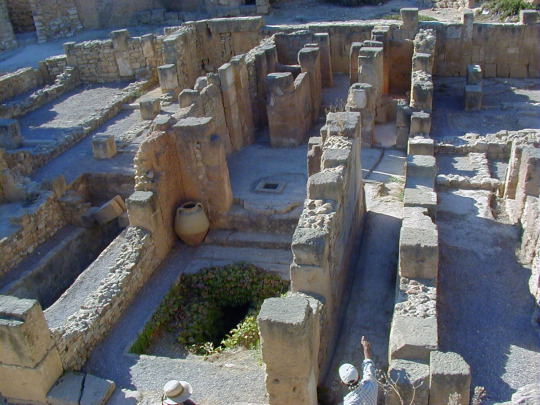
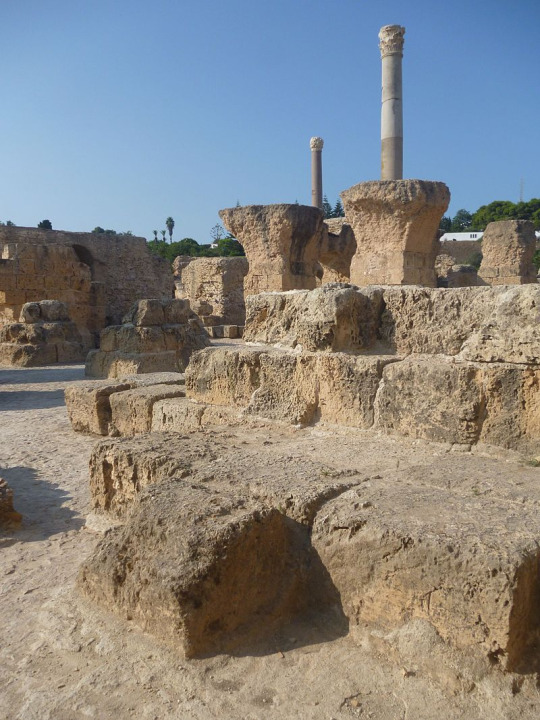
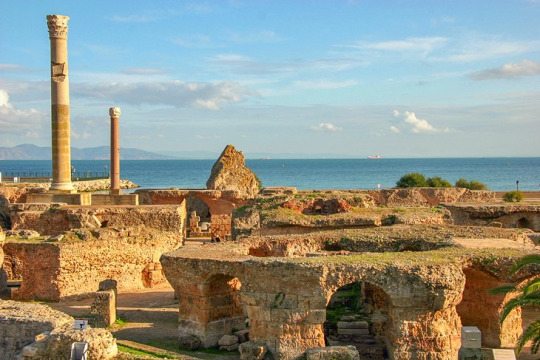

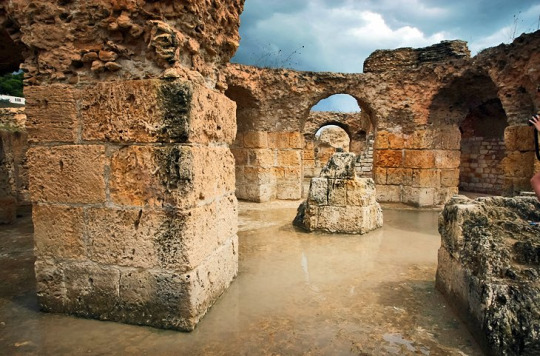
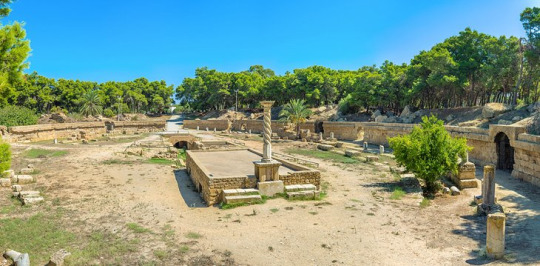

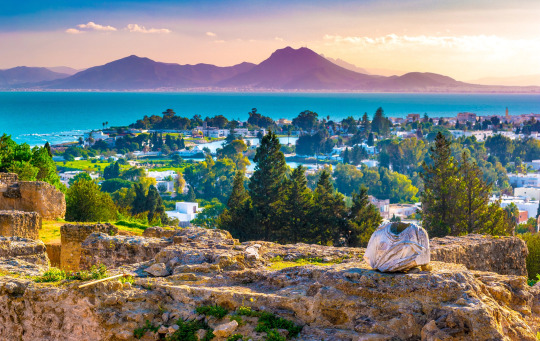
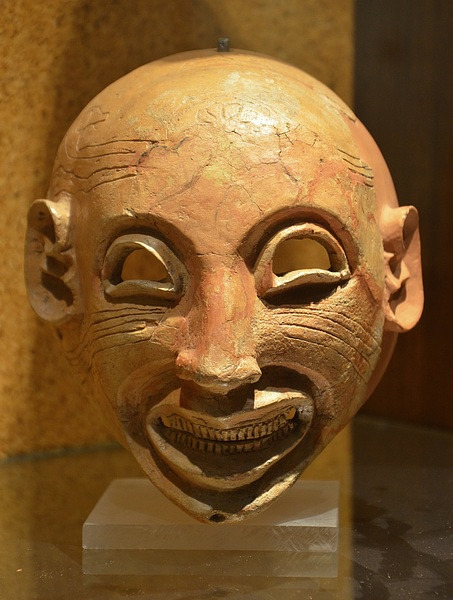
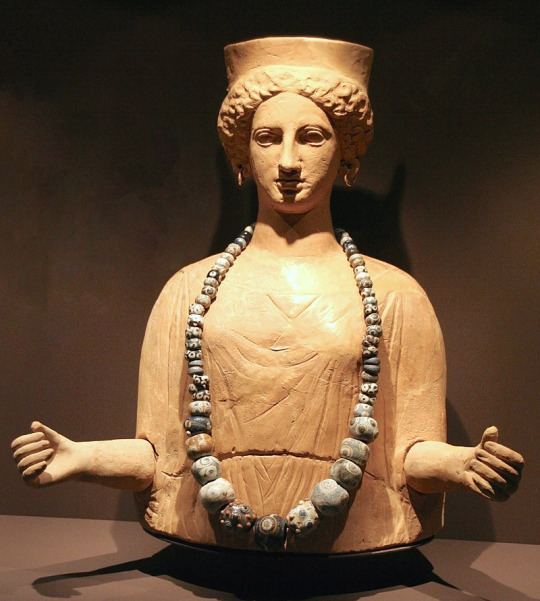
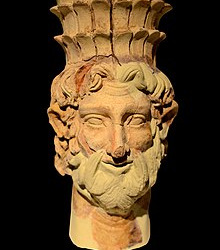
#antiquity#ancient carthage#punic wars#hannibal#ancient rome#tunisia#north africa#ancient world#ancient history#carthage#rome#mediterranean#phoenicia#ancient phoenicia#tyre#baal hamon#tanit#dido#ancient ruins
24 notes
·
View notes
Note
Kai! I need rescue here 😬 Could you give me some basics about Iberia? Her personality, believes, maybe names?? I’m considering using her for a fanfic but I know close to nothing about her :’) but I’ve seen you talk about her sometimes so I’m hoping you can save me kkkkk perdão a cara de pau
Olá Caju! Tudo bem! Pergunta à vontade, estou sempre contente por asks 🥰 venham elas!
Since she was born as a result of the Celtiberians, I think she would have chosen a Celt name for herself: one of the most common names for fortifications was "Brica" and I think it would fit her. Also "Kala", means rock or cliff and it's cute.
Iberia was a warrior woman, the Iberian tribes trained the strongest and fastest boys and girls in the mountains before sending them to battle with shields, swords and spears, so I think she would spend a big part of her youth training and fighting on her land's many wars.
She had to keep defending her territory from invaders, so her sword (Falcata) was always at her hip. She was non-nonsense and serious, but also loud and always ready for a good fight, my girl was raised in the military, so mostly she either wanted to be left alone or go looking for trouble with her army friends. A woman of extreme emotions 😉. She was also a great boxer, and the warriors would often compete with each other.
Both men and women wore long hair at that time, they would braid it around their forehead when they fought.
On peaceful days, she mainly took care of agriculture, fishing and hunting. She had a few silver earings and necklaces that she wore on special occasions.
She lived through hard times, she wasn't part of any rich civilization, so I picture her mostly as serious and pragmatic, fighting for what she had and rolling her eyes at the big kingdom's in the east. Her beliefs would most likely be the old Celt gods of the elements (wind, water, sky), whose names have been lost to time, also there are records of her tribes worshing Ares, the Greek God of War, but later she adopted the Roman gods.
Carthage could be considered both her first big enemy and her first love. She worked as a mercenary for him when he invaded Rome during the Punic wars, but their time was brief. Rome killed Carthage and took over her territory. I think she never forgave Rome for killing her first love, conquering her and turning her into his province, but when Hispania and Lusitania were born, she had to worry about their well being, so she wasn't as beligerent as before.
#i hope you liked it#sorry if it got a bit long!#super interested in the fic now#hws Iberia#aph iberia#hetalia#aph portugal#hws portugal#hws spain#aph spain#hws ancient rome#aph ancient rome
17 notes
·
View notes
Text
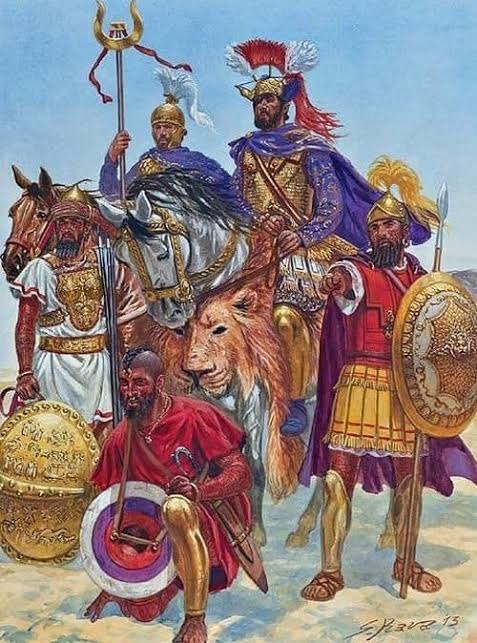




The First Act of the Mercenary Army in the Truceless War with Carthage.
“Throw!” For the Carthaginians being always accustomed to employ mercenary troops of miscellaneous nationalities, in securing that an army should consist of several different races, act wisely as far as the prevention of any rapid combinations for mutiny, or difficulty on the part of the commanders in overawing insubordination, are concerned: but the policy utterly breaks down when an outburst of anger, or popular delusion, or internal dissension, has actually occurred; for it makes it impossible for the commander to soothe excited feelings, to remove misapprehensions, or to show the ignorant their error. Armies in such a state are not usually content with mere human wickedness; they end by assuming the ferocity of wild beasts and the vindictiveness of insanity. This is just what happened in this case. There were in the army Iberians and Celts, men from Liguria and the Balearic Islands, and a considerable number of half-bred Greeks, mostly deserters and slaves; while the main body consisted of Libyans. Consequently it was impossible to collect and address them en masse, or to approach them with this view by any means whatever. There was no help for it: the general could not possibly know their several languages; and to make a speech four or five times on the same subject, by the mouths of several interpreters, was almost more impossible, if I may say so, than that. The only alternative was for him to address his entreaties and exhortations to the soldiers through their officers. And this Hanno continually endeavoured to do. But there was the same difficulty with them. Sometimes they failed to understand what he said: at others they received his words with expressions of approval to his face, and yet from error or malice reported them in a contrary sense to the common soldiers. The result was a general scene of uncertainty, mistrust, and misunderstanding. And to crown all, they took it into their heads that the Carthaginian government had a design in thus sending Hanno to them: that they purposely did not send the generals who were acquainted with the services they had rendered in Sicily, and who had been the authors of the promises made to them; but had sent the one man who had not been present at any of these transactions. Whether that were so or not, they finally broke off all negotiations with Hanno; conceived a violent mistrust of their several commanders; and in a furious outburst of anger with the Carthaginians started towards the city, and pitched their camp about a hundred and twenty stades from Carthage, at the town of Tunes, to the number of over twenty thousand. The men at once hurried to make a meeting; Spendius and Mathōs delivered violent invectives against Gesco and the Carthaginians; their words were received with every sign of approval; no one else could get a hearing; whoever did attempt to speak was promptly stoned to death, without the assembly so much as waiting to ascertain whether be intended to support the party of Spendius or no. A considerable number of privates as well as officers were killed in this manner in the various émeutes which took place; and from the constant repetition of this act of violence the whole army learnt the meaning of the word "throw," although there was not another word which was intelligible to them all in common. The most usual occasion for this to happen was when they collected in crowds flushed with wine after their midday meal. On such occasions, if only some one started the cry "throw," such volleys were poured in from every side, and with such rapidity, that it was impossible for any one to escape who once ventured to stand forward to address them. The result was that soon no one had the courage to offer them any counsel at all; and they accordingly appointed Mathōs and Spendius as their commanders.
#polybius of megalopolis#polybius histories#carthage#carthaginian mercenaries#truceless war#throw#languages#language barriers#humour#rome#roman#spqr
7 notes
·
View notes